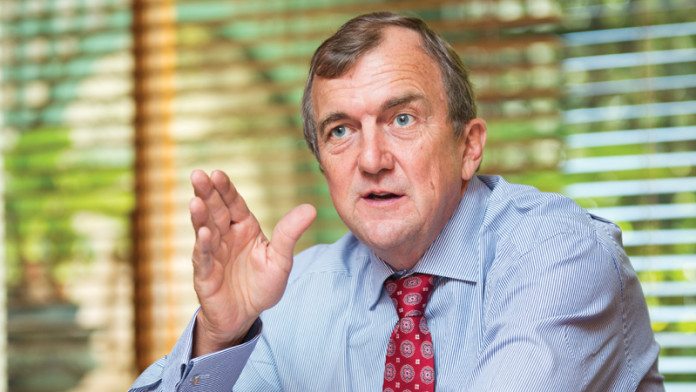
RANDGOLD Resources was on course for full-year gold production of 1.3 million ounces following a strong showing in the second quarter in which 341,316 oz in output took the half year production number to 663,786 oz – 16% higher year-on-year.
Randgold produced 1.25 million oz in its 2016 financial year and had previously guided to production of between 1.25 million oz and 1.3 million oz for the current period. It has in the past spoken of reaching annual production 1.5 million oz were its expansion and replacement ounce projects to meet expectations.
“At this stage the outlook is positive, and Randgold is trending towards the top end of its 2017 production guidance range at a total cash cost below $600 per ounce,” said Mark Bristow, CEO of Randgold Resources in the company’s second quarter operational and financial numbers, published today.
The improved production figures, and an interim 13% year-on-year decline in cash costs, helped Randgold to an interim profit of $187.7m – an increase of 53% on the corresponding period in 2016. Cash on hand came in at $572.8m, down on the $600m in the previous quarter, but having absorbed a $94.0m dividend payout following the 2016 year-end close.
The cash generation boded well for an increase in the 2017 dividend which Bristow said in May was tracking to exceed the $1 per share dividend in 2016. Randgold will distribute spare cash above a $500m buffer and provided all its capital requirements are met.
“No interim dividend was declared as expected, but we expect an attractive 2017 dividend given the company’s stated intention of returning excess free cash flow over $0.5bn,” said Investec Securities. “Cash reduced slightly in the second quarter from $600m at the end of the first quarter to $573m, but after paying the 2016 dividend of $94m, Randgold remains debt free, highlighting a strong balance sheet,” it added.
Shares in the company were up 4.3% in early London trade. The share is down about 19% down a 12-month basis, but it has been edging up since the beginning of July.
Operationally, Randgold appears to have recovered from the work stoppages at Loulo-Gounkoto and Tongon in the latter half of 2016, while Kibali, a joint venture Randgold shares with AngloGold Ashanti, finalised had overcome some of its process issues, and was preparing for the ramp-up of underground operations later this year.
If Kibali can ramp up to expectations it may result in a 5% out-performance on its gold production target, said Bristow in an interview. He acknowledged the quarter had been solid and that attention would fall on advances in the group’s gold resource replacement and generative strategy.
“I think the emphasis on this quarter will be on our ability to develop three new mines in five years,” said Bristow. “There were some raised eyebrows when we said this, but we hope to get Massawa over the line,” he said referring to Randgold’s investment hurdle rate of three million oz providing a 20% return at a $1,000/oz gold price. Massawa, Randgold’s first major investment in Senegal, had reserves of 2.5 million oz yielding an 18% return.
Bristow made further comments about potential changes to the regulatory environment in the DRC, an area Randgold views as highly prospective in terms of its “three in five” growth plan. Asked about any progress on potential changes to the mining code, Bristow said: “It’s as clear as mud. But we continue to engage and there is dialogue”.








